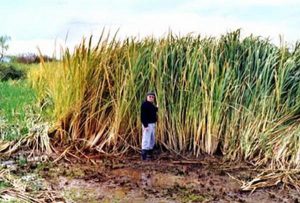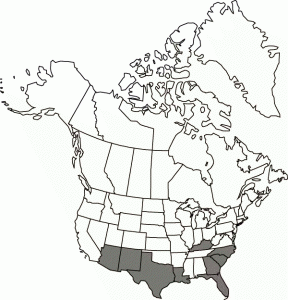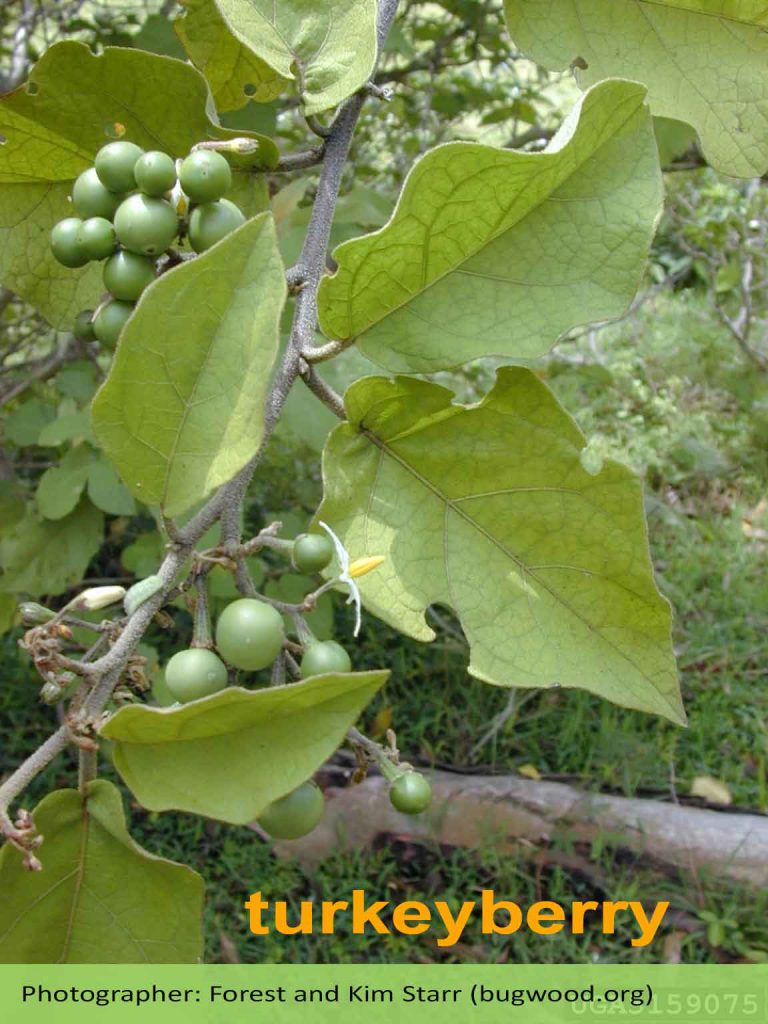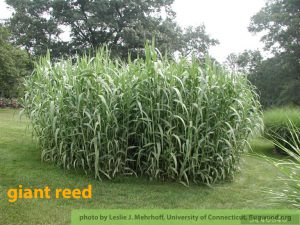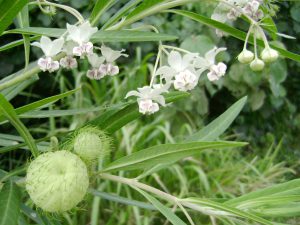California Pest Rating for
Slender Russian Thistle | Salsola collina Pallas
Caryophyllales: Chenopodiaceae
Pest Rating: A | Proposed Seed Rating: P
PEST RATING PROFILE
Initiating Event:
Salsola collina Pallas is a listed as a noxious weed in California . It is regarded as an invasive weed in Colorado. It has widespread distribution in many U.S. states and Canada. This plant has been introduced in lower 48 states and is considered a major noxious weed in North America. It has not been reported growing in natural environment of California. Currently, it has been rated as “A”. A pest risk proposal is required to evaluate this rating.
History & Status:
Background: Salsola collina is an erect annual forb in the goosefoot family. It is a round, bushy, much branched plant growing 1-3.5 feet high. The branches are slender and soft when young and woody when mature. The leaves are alternate. Flowers are small, green white or pink in color. It produces about 30 seeds per seed head (Swearingen & Bargeron, 2016).
Salsola collina was reported for the first time in North America from Minnesota by J.W. Moore in 1938. Later it was discovered in Colorado, Iowa and Missouri. Reports of S. collina for Arizona and New York are based on specimen cited by S. Rilke in 1999. Its actual distribution seems to be underestimated because of its confusion with deviant forms of S. tragus. (Flora of North America).
Slender Russian thistle typically grows in sandy soils on dry plains, in cultivated fields, roadsides, waste places, grain growing areas and disturbed plant communities. It prefers light to medium soils but can also grow in vary alkaline and saline soils. The only limitation is that it cannot grow in shade (USDA Forest Services, 2006).
Worldwide Distribution: Salsola collina is native to eastern Europe and Asia. It is considered as a Eurasian import and has become a dominant tumble weed in North America. This species is reported to be widespread in Midwestern states of United States and Canada. It is currently present in Colorado, Iowa, Illinoise, Kansas, Kentucky, Massachusetts, Minnesota, Missouri, Montana, North Dakota, Nebraska, Oklahoma, South Dakota, Utah, West Virginia and Wyoming. In Canada, it is distributed in the province of Alberta, Manitoba, Ontario and Saskatchewan (Kartesz, 1994). This species is considered invasive in Colorado and a quarantine weed in California.It has been introduced in China, Australia (in Northern Territory and Queensland where it is considered to be a pest plant of national importance), the Caribbean, Indian Ocean islands, Mauritius, the United States, Central America, South America and the Galápagos Islands. It has naturalized in several countries where it has been introduced as a medicinal, forage and fuelwood plant. It has been introduced in China, Australia (in Northern Territory and Queensland where it is considered to be a pest plant of national importance), the Caribbean, Indian Ocean islands, Mauritius, the United States, Central America, South America and the Galápagos Islands. It has naturalized in several countries where it has been introduced as a medicinal, forage and fuelwood plant.
Official Control: Salsola collina is not listed as a harmful organism in any other country. However, other Salsola species like S. tragus have been reported as harmful organism in Brazil (PCIT-PExD).
California Distribution: Salsola Collina has not been found growing in the natural environment in California
California Interceptions: Salsola collina has been intercepted 83 times from January 1990 through October 2017 by CDFA. These interceptions were mostly through various border stations inspections of vehicles entering the state (PHPPS- PDR Database)
The risk Salsola Collina (Slender Russian thistle) would pose to California is evaluated below.
Consequences of Introduction:
1) Climate/Host Interaction: Salsola collina has the ability to grow in dry plains areas of California’s central valley extending from Shasta County in north to Imperial County in the south. (CA Plains Database, 2017).The ability of this plant to grow on roadsides, grain growing areas and naturally disturbed areas make it vulnerable to grow in these areas in California. It receives a High (3) in this category.
Evaluate if the pest would have suitable hosts and climate to establish in California. Score:
– Low (1) Not likely to establish in California; or likely to establish in very limited areas.
– Medium (2) may be able to establish in a larger but limited part of California.
– High (3) likely to establish a widespread distribution in California.
2) Known Pest Host Range: Salsola collina does not need one particular host but grow wherever ecological conditions are favorable. This species can grow on plains, semi natural and naturally disturbed areas, abandoned and cultivated fields and waste places in California. It cannot grow in shade and in areas with heavy soil types. It receives a High (3) in this category
Evaluate the host range of the pest. Score:
– Low (1) has a very limited host range.
– Medium (2) has a moderate host range.
– High (3) has a wide host range.
3) Pest Dispersal Potential: Salsola collina reproduces by seeds. It produces 30 seeds per seed head. This plant flowers from July to September and the seeds ripen from September to October. Seeds remain viable for less than a year. Seeds dispersal can happen when plants are mowed after seeds set occurs. Tillage can favor germination of seeds. Roads and highway may allow windblown plants to disperse to long distance, spreading seeds to a wider area. It receives a Medium (2) in this category
Evaluate the natural and artificial dispersal potential of the pest. Score:
– Low (1) does not have high reproductive or dispersal potential.
– Medium (2) has either high reproductive or dispersal potential.
– High (3) has both high reproduction and dispersal potential.
4) Economic Impact: Salsola collina can reduce yield and quality of various agricultural crops. It can depletes soil moisture, interfere with tillage operations. Large windblown plants can reduce highway safety by obstructing views along right of ways. (USDA- Forest Services, 2006). It receives a Medium (2) in this category
Evaluate the economic impact of the pest to California using the criteria below. Score:
Economic Impact: A, D
A. The pest could lower crop yield.
B. The pest could lower crop value (includes increasing crop production costs).
C. The pest could trigger the loss of markets (includes quarantines).
D. The pest could negatively change normal cultural practices.
E. The pest can vector, or is vectored, by another pestiferous organism.
F. The organism is injurious or poisonous to agriculturally important animals.
G. The organism can interfere with the delivery or supply of water for agricultural uses.
Economic Impact Score: 2
– Low (1) causes 0 or 1 of these impacts.
– Medium (2) causes 2 of these impacts.
– High (3) causes 3 or more of these impacts.
5) Environmental Impact: Salsola Collina is likely to threaten native plant ecosystems. It has the ability to deplete soil moisture. Windblown plants can accumulate along trees and fence lines and can possibly cause serious fire hazards in dry plains of California. Salsola collina is not likely to impact threatened and endangered species, however it can impact the quality of cultivated plants and is a roadside nuisance. It receives a High (3) in this category
Environmental Impact: A, C
A. The pest could have a significant environmental impact such as lowering biodiversity, disrupting natural communities, or changing ecosystem processes.
B. The pest could directly affect threatened or endangered species.
C. The pest could impact threatened or endangered species by disrupting critical habitats.
D. The pest could trigger additional official or private treatment programs.
E. The pest significantly impacts cultural practices, home/urban gardening or ornamental plantings.
Score the pest for Environmental Impact. Score: 3
– Low (1) causes none of the above to occur.
– Medium (2) causes one of the above to occur.
– High (3) causes two or more of the above to occur.
Consequences of Introduction to California for Salsola collina (slender russian thistle) High (13)
Add up the total score and include it here.
–Low = 5-8 points
–Medium = 9-12 points
–High = 13-15 points
6) Post Entry Distribution and Survey Information: Salsola Collina has not been found occurring in natural environment of California and receives a Not established (0) in this category.
Evaluate the known distribution in California. Only official records identified by a taxonomic expert and supported by voucher specimens deposited in natural history collections should be considered. Pest incursions that have been eradicated, are under eradication, or have been delimited with no further detections should not be included.
–Not established (0) Pest never detected in California, or known only from incursions.
–Low (-1) Pest has a localized distribution in California, or is established in one suitable climate/host area (region).
–Medium (-2) Pest is widespread in California but not fully established in the endangered area, or pest established in two contiguous suitable climate/host areas.
–High (-3) Pest has fully established in the endangered area, or pest is reported in more than two contiguous or non-contiguous suitable climate/host areas.
Final Score:
The final score is the consequences of introduction score minus the post entry distribution and survey information score: High (13)
Uncertainty:
Salsola Collina is a noxious and quarentine weed in California and CDFA has been successfully intercepting this species at the state borders. Another similar species, Salsola tragus is a common species in California. Because S. collina resembles S. tragus, there may be a possibility that this species is present in southern California where large infestations of S. tragus occur (Cal –IPC, 2017)
Conclusion and Rating Justification:
Salsola Collina has not been found in the natural environment of California. If this species were to introduce accidently, it can cause significance economic and environmental impacts to agricultural and natural resources of California. Therefore, an “A” rating is justified.
References:
California Invasive Species Council, 2017. Plant assessment form. Salsola tragus. http://www.cal-ipc.org/plants/paf/salsola-tragus-plant-assessment-form/
California Plains Database, 2017. CA home town locator. Local information, resources and data https://california.hometownlocator.com/features/physical,class,plain.cfm
Flora of North America. Volume 4, page 399,400,402 http://www.efloras.org/florataxon.aspx?flora_id=1&taxon_id=200006908
Kartesz, J.T. 1994. A synonymized checklist of the vascular flora of the United States, Canada, and Greenland. 2nd edition. 2 vols. Timber Press, Portland, OR. http://explorer.natureserve.org/servlet/NatureServe?searchName=Salsola%20collina
Pest and Damage Record Database, Plant Health and Pest Prevention Services, California Department of Food and Agriculture. Accessed 11/17/2017 http://phpps.cdfa.ca.gov/user/frmLogon2.asp
Swearingen, J., C. Bargeron. 2016. Invasive Plant Atlas of the United States. University of Georgia Center for Invasive Species and Ecosystem Health https://www.invasiveplantatlas.org/subject.html?sub=6354
Phytosanitary Certificate Issuance & Tracking System (PCIT), Phytosanitary Export Database (PExD), USDA, APHIS. Accessed 11/17/2017 https://pcit.aphis.usda.gov/PExD/faces/ReportFormat.jsp
Author:
Raj Randhawa, 1220 ‘N’ Street, Room 221, Sacramento CA 95814, (916)403-6617, raj.randhawa@cdfa.ca.gov
Responsible Party:
Dean G. Kelch, Primary Botanist; California Department of Food and Agriculture; 1220 N Street, Sacramento, CA 95814; Tel. (916) 403-6650; plant.health[@]cdfa.ca.gov.
*NOTE:
You must be registered and logged in to post a comment. If you have registered and have not received the registration confirmation, please contact us at plant.health[@]cdfa.ca.gov.
Comment Format:
♦ Comments should refer to the appropriate California Pest Rating Proposal Form subsection(s) being commented on, as shown below.
Example Comment:
Consequences of Introduction: 1. Climate/Host Interaction: [Your comment that relates to “Climate/Host Interaction” here.]
♦ Posted comments will not be able to be viewed immediately.
♦ Comments may not be posted if they:
Contain inappropriate language which is not germane to the pest rating proposal;
Contains defamatory, false, inaccurate, abusive, obscene, pornographic, sexually oriented, threatening, racially offensive, discriminatory or illegal material;
Violates agency regulations prohibiting sexual harassment or other forms of discrimination;
Violates agency regulations prohibiting workplace violence, including threats.
♦ Comments may be edited prior to posting to ensure they are entirely germane.
♦ Posted comments shall be those which have been approved in content and posted to the website to be viewed, not just submitted.
Pest Rating: A | Proposed Seed Rating: P
Posted by ls



